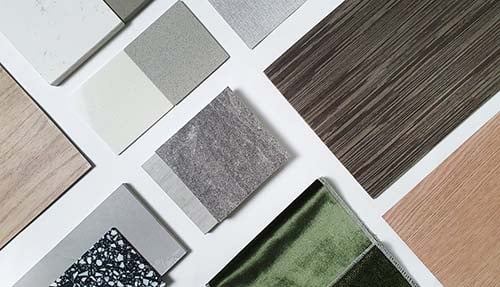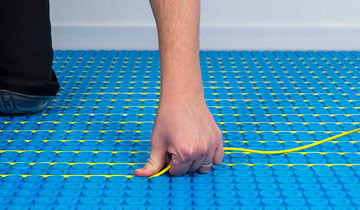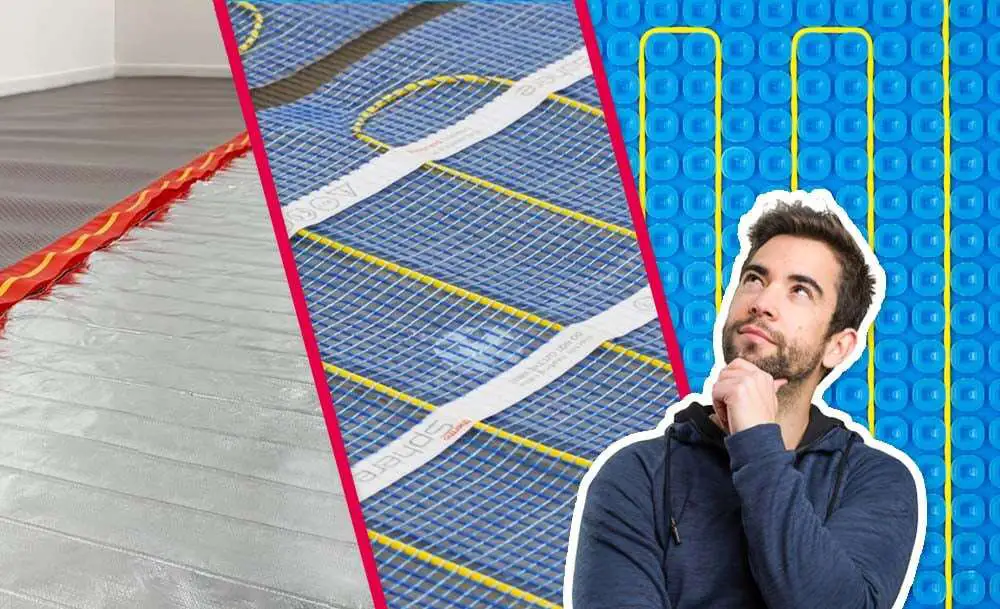8 min read
7 tips before buying electric underfloor heating
If you are in the market for an electric underfloor heating system for your next home renovation, then you have landed in the perfect place. We’ve...
5 min read
 Chris Hedges
:
Feb 7, 2022
Chris Hedges
:
Feb 7, 2022

So, you’ve completed all of your research and decided that electric underfloor heating is the best fit for your new project. Great! What are the next steps?
There are lots of great installers out there who will do a top job on your installation but if you are looking to install electric underfloor heating yourself, there are a few things you need to know before getting on with the task at hand.
In this article, we guide you through decisions you need to make and top tips. This will help to ensure that you have what you need to make your installation and enjoyment of underfloor heating hassle-free.
There are 6 key questions that need answering before going into your local electric underfloor heating retailer. We’ll address each one head on and why they matter.
Usually the downstairs of a typical home will have a concrete substrate (subfloor) and the upstairs will be timber or plywood. The thickness of the plywood subfloor varies depending on the distance between the floor joists. For example, thicker plywood tends to be used when there is more than a 40cm gap between joists.
But why is the substrate important?
It’s about system efficiency! And for your underfloor heating to have optimum performance you need insulation. Without it, you’ll end up paying more money to run it because it will take almost twice as long to heat the room which isn’t efficient at all. This is because almost 50% of the heat generated will be lost to the substrate. We’ve covered this in depth in our ‘Why removing insulation board from underfloor heating is costing homeowners’ blog which is well worth the read.
Anyway. Back to this article.
For concrete and screed substrates, we recommend uncoated insulation boards and for timber substrates, choose coated insulation boards. Where possible, use a 10mm insulation board.
There are electric underfloor heating systems that are better suited to certain floor finishes than others. You can buy the heating cable as a loose cable system, a heating and decoupling system or pre-spaced as a mat which you simply roll out.
Tile and Stone Floors
If your plan is to lay tile or stone, it’s best to look at a heating and decoupling system or a pre-spaced mesh mat system. Both will do the job and do it well. However, because a tiled floor is often prone to cracking and gaps forming between tiles because of changes in temperature, we would probably lean towards installing a heating and decoupling system. The decoupling membrane is designed to prevent cracking, lifting and delamination of tiled floors. It acts like a decoupling layer which allows the tiled surface to move independently from the substrate.
Another benefit of this type of system is that they allow for different heating outputs by changing the spacing of the cable. For example, using wider spacing means that you can create a lower heat output which is ideal for well-insulated rooms.
Check out ‘The best electric underfloor heating for tile and stone floors’ article for a comprehensive guide to electric heating for tile or stone floors.
Wood, Carpet and Vinyl Floors
If you project is better suited to a wood, carpet or vinyl floor finish, a foil electric heating system is an ideal choice. Two layers of foil wrap the heating cable which provides a fast heat up time and optimum thermal conductivity. These types of systems look very similar between brands but look out for subtle differences. You ideally want a foil system that’s fully earthed and has exposed cable loops which helps to speed up installation.
If you are using a wood finish for your floor, this ‘The best underfloor heating for wooden floors’ article lays out some key points to consider.
If you are going for a carpet finish, check out the ‘Can you use electric underfloor heating under carpet?’ article which contains everything you need to know.
We’ll be reinforcing this point at the end of this blog, but when installing an electric underfloor heating system, you must get a Part P registered electrician to make the final connections to the mains!

There is a simple calculation to work this out.
Floor Area (m2) – Area taken up by fixed units (m2) = Total Underfloor Heating (m2)
What do we mean by fixed units?
As an example, let’s take a typical bathroom. The fixed units will be things like the bath tub, sink and toilet. Also, it is worth considering what furniture you will be having in the room. Any type of flat-bottomed furniture like sofas and bookcases will restrict the airflow to the floor and in turn cause ‘thermal blocking’. This can result in the heating cable overheating causing damage to the floor above. So, if you are planning to have this type of furniture, we would recommend including these as ‘area taken up by fixed units’ within your calculation.
If you aren’t finishing your floor with a tile finish we would recommend a 10mm depth of self-levelling compound to ensure a perfectly level floor. The calculation for this may vary per manufacturer or brand, so for illustrative purposes, we’ll show you the calculation we use for our customers.
(Floor area (m2) x 1.8 x Depth (mm)) / 25 = The number of bags needed
Firstly, not all thermostats work with electric underfloor heating and if you want to know why, read ‘What is the best thermostat to use for underfloor heating?’. It includes everything you need to choose the right thermostat for you. It is important to note that if you do find the right thermostat that suits your lifestyle, you’ll be able to run your electric underfloor system more efficiently. If you reduced the room temperatures by just 1 degree Celsius you will help reduce CO2 emissions by as much as 300kg and your heating bill by £65 – £75 each year.
Take a look at these personas below and see which best suits you.
The Technophobe
If technology isn’t your thing and you only want to control the heating in a room that isn’t used frequently, then a manual thermostat will suit you well.
The Environmentalist
If you are eager to reduce your energy consumption, and make a positive dent to your heating bills, then a programmable thermostat is probably more your thing. With lots of energy saving features it will help you heat your living space in an environmentally sympathetic way.
The Tech Enthusiast
Are you already embracing smart home technology in your home? Love gadgets and the latest tech? If so, smart thermostats are a great choice. Monitor your energy consumption and control your heating with an app and even your voice.
The Spa Goer
Looking for that 5-star luxury feel? Combine the control of your heated floor with an electric towel bar, ladder rail or mirror demister. Control made easy!
Often overlooked, this is an important question to ask. If the load of the electric underfloor heating circuit exceeds the maximum load of the thermostat (16A), but you want to control it from a single thermostat, then you must install a suitably rated contactor/snubber. It is worth asking a Part P registered electrician to check this as well as to make the final connections of your underfloor heating to the mains.
The calculation to use is:
(Heated area (m2) x Wattage of cable (W)) / 230 = Load (A)
By simply answering the six questions we have run through in this blog, you’ll have ticked off the things you need to head out to your local underfloor heating retailer and buy the system that best suits your project.
As always, if you have any questions about underfloor heating thermostats, contact one of the team. Just head on over to the contact us page to start the conversation.

8 min read
If you are in the market for an electric underfloor heating system for your next home renovation, then you have landed in the perfect place. We’ve...

14 min read
So, you’ve completed your research on electric underfloor heating and have decided that it’s the perfect fit for your project. But, with so much...

9 min read
If you are researching the feasibility of electric underfloor heating for your home, you may see a lot of examples that simply talk about underfloor...